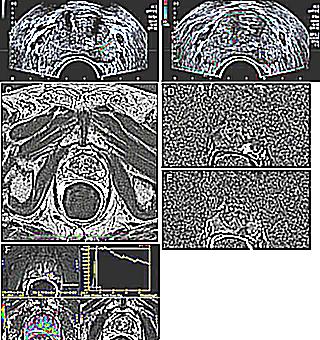Home >
Erectile Dysfunction >
Analysis to determine the oncological marker of the prostate gland
Analysis to determine the oncological marker of the prostate gland

The term canine tumor marker in clinical terminology stands for prostatic antigen. Protein antigen is a high molecular weight protein produced by the glandular cells of the prostate. A change in the quantitative indicator of this protein indicates that any pathological changes are developing in the tissues of the prostate gland, this leads to a violation of its secretory function. As a rule, the analysis for the determination of psa is carried out in order to diagnose oncological diseases of benign or malignant origin.
What is the purpose of this laboratory analysis?
Analysis for the determination of a specific antigen in clinical practice is carried out in order to detect pathology in the glandular tissue of the prostate gland.
The main reasons for this laboratory test are:
- pathological formations in the tissues of the prostate of an oncological nature;
- tissue inflammation by bacterial pathogens;
- replacement of glandular cells of the prostate with connective tissue layers;
- acute tissue ischemia due to obliteration of the arteries supplying the gland;
- monitoring the effectiveness of treatment measures carried out for various diseases.
The analysis to determine the tumor marker in the study of the prostate gland is carried out in the form of a venous blood sampling. The study is appointed by the attending doctor, and blood sampling is carried out in specialized manipulation rooms. Before the procedure, men should be prepared to get better results.
Activities to prepare for the test
Before taking the analysis, you should follow the general rules of preparation, otherwise the doctor will receive incorrect results, which will mislead him.
Basic rules for preparing for the study:
All of the above rules are mandatory if the patient is interested in high-quality diagnostics. If any of the rules have been violated, the patient should report this to his treating doctor.
Analysis Tactics
The analysis to determine the oncological marker is carried out in the morning, this condition is mandatory. Peripheral blood sampling should continue no later than 11 noon. To obtain the test material, blood is drawn from a vein with a 20-milliliter syringe; it is absolutely forbidden to consume food and even water before donating blood.
Blood is placed in a specially prepared test tube, which is hermetically sealed or contains a special gel to preserve blood. The nurse then takes the material to a specific laboratory.
Explanation of research results, normal indicators
After receiving the results of laboratory research, the treating doctor makes his conclusions that the concentration of the protein antigen is normal or that there are any deviations. Based on the results obtained, the final diagnosis is established and it is decided whether it is necessary to carry out therapeutic measures. Normal prostatic antigen values range from 0.2 to 4 ng / ml.
It should be borne in mind that normal indicators may vary depending on age-related changes:
- 40 - 49 years old the norm is 2.5 ng / ml;
- 50-59 years old, norm 3.5 ng / ml;
- 60-69 years old, norm 4.5 ng / ml;
- 70-79 years old, the norm is 6.5 ng / ml.
As the above statistical indicators show, the results of the study and their standards may differ for each person depending on age characteristics.
Evaluation of the research results, negative results
Elevated canine tumor markers show the overall percentage of the risk of developing an oncological process in the prostate gland, only a qualified specialist can evaluate the result of the analysis.
With an increase in the concentration of prostatic antigen in the peripheral blood, the doctor evaluating the indicators immediately suspects an oncological pathology of the prostate gland. Comparing the statistical indicators of 30% in patients with an increase in normal antigen indicators, tumors of benign etiology are found, this condition is quite successfully treatable and has a small percentage of relapses. The remaining 70% suffer from a malignant form of oncological pathology, and unfortunately the prognosis for a full recovery is not favorable.
A slight increase in the antigen in the blood indicates the initial stage of the disease, as a differential diagnosis, the doctor conducts additional instrumental diagnostics and prescribes treatment.An excess of more than 20 ng / ml indicates a prolonged course of the oncological process, an increase of more than 40 ng / ml indicates the progression of the disease with severe metastasis to nearby organs and lymph nodes.
How accurate is the analysis?
Laboratory research for the quantitative content of prostatic protein antigen in the blood may not show reliable results in all cases. About 10% of cases were recorded when negative results of the study were erroneous and showed normal results, but at the same time, cancer progressed in the human body. Such errors are most often encountered in connection with the individual peculiarities of hemodynamics and reduced permeability of the walls of blood vessels. In other cases, the determination of the prostatic tumor marker is the most reliable method for diagnosing prostate cancer.



























